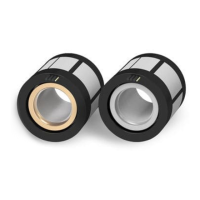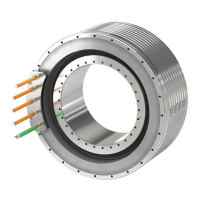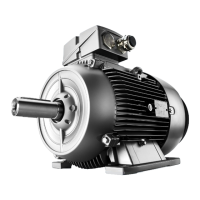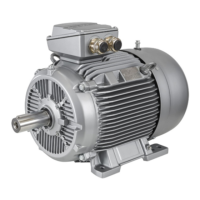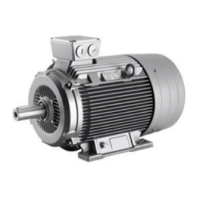4.7 Radial and axial forces
4.7.1 Radial force
Do not exceed specic radial forces in order to guarantee perfect operation.
Never exceed the minimum force for any of the dierent shaft heights. This minimum force is
indicated in the radial force diagrams. The diagrams show the radial force F
R
• At various operating speeds
• As a function of the bearing lifetime
The force diagrams and tables apply to standard shaft ends at the DE. For smaller shaft
diameters, only reduced radial forces may be transmitted or none at all.
For force levels going beyond these, contact your local sales partner.
NOTICE
Premature damage to bearings and shaft breakage due to strong radial forces
Bearings can be prematurely damaged and shafts may break if force transmission elements
apply too much load to the shaft end as a result of radial forces.
• When using mechanical transmission elements, ensure that the maximum limit values
specied in the radial force diagrams are not exceeded.
NOTICE
Premature damage to bearings due to insucient radial forces
Only for bearings with increased radial force (shaft height 100 to 280):
Insuciently high radial forces can cause the bearings to roll in an undened fashion. This
results in increased bearing wear.
• For applications with an extremely low radial force load, ensure that the motor shaft is
subject to at least the minimum radial force specied in the diagrams.
Where the radial force load is less than the minimum radial force, e.g. on a coupling drive,
you must not use the bearings for increased radial force. Use a motor with standard bearings
for these applications.
NOTICE
Destruction of bearing seats
The motor bearings are designed for operation with radial force. Rotating forces from the
process or imbalance > Q 2.5 can destroy the bearing seats. Rotating forces and imbalance can
also occur on coupling drives.
• Avoid rotating forces and imbalance.
Mechanical properties
4.7Radial and axial forces
1PH8 SIMOTICS M main motors
Conguration Manual, 12/2022, A5E51895839A 111
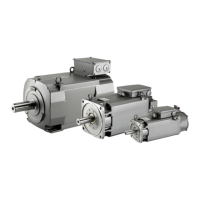
